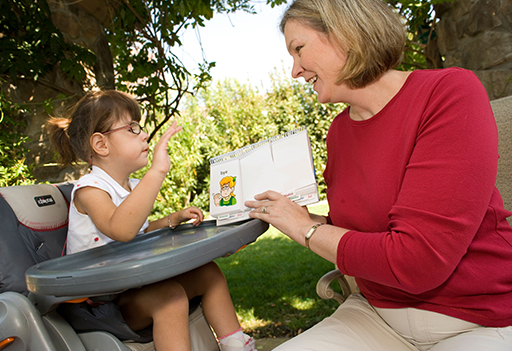2 Intellectual and developmental disorders
This section will help you think about making information accessible for someone with a learning disability and to consider how to help people communicate concepts such as emotion. It will also explore the experiences of family members when they have little information about their child’s condition. You will finish this section by thinking about advocacy and self-advocacy of young people with a learning disability.
Before you explore the experiences related to having a child diagnosed with a learning disability, you will review some of the key elements of learning disabilities themselves.
You may have some knowledge of what a learning disability is and be aware of issues that become apparent for a person with a learning disability during various important events, such as life transitions from child to adult. For example, there are not only the biological and psychological changes for the individual and their families or carers, but also the social changes, including the transition from child to adult services, school to college etc. It is vital to remember to treat people as individuals (whether or not they have a learning disability) and in a person-centred way – placing them at the centre of any decision-making processes, helping to facilitate their understanding and helping to facilitate the communication of their decisions. This is particularly important in relation to issues such as gaining valid consent for health interventions, and relationship and financial issues, for example.

One of the ways that you can support people with communication is through developing and adapting communication systems. This can involve personalising communication to specific individuals and making information more accessible to the individual. There are many different communication systems and adaptations available to help with understanding, although some concepts such as emotions can prove difficult to portray.
The following activity will help you to explore some of the available tools and potential approaches for making information more accessible to individuals.
Activity 6 Communication of emotions
When thinking about making information accessible and helping people to communicate, it can be difficult knowing how to support people to express emotions.
Explore the links provided below and consider how you may try to communicate the feeling of ‘happy’ without using speech or text. Note down what you think some of the drawbacks are of trying to express emotions in the methods identified. Also note down suggestions for other potential approaches that you think may help to express emotion.
Remember, to avoid losing your place in the course, if you are studying on a desktop you should open the link in a new tab or window by holding down Ctrl (or Cmd on a Mac) when you click on it. If you are studying on a mobile device hold down the link and select to ‘Open in New Tab’. Return here when you have finished.
- NHS: Guide to making information accessible for people with a learning disability [Tip: hold Ctrl and click a link to open it in a new tab. (Hide tip)]
- The Makaton Charity: How Makaton works
- The PACE Centre on YouTube: Eyegaze communication in action
- Communication Matters: Talking mats
Discussion
Putting information into a format that is accessible for people is vital and the tools identified in this activity are extremely useful. Emotions, though, can be difficult to communicate. Some of the drawbacks may include trying to express an intensity of emotion, for example the difference between happy, very happy and ecstatic. In theory, synthesised speech can be made louder, or signs/symbols can be made bigger or have a particular colour to represent an emotion. Makaton and other sign languages can be very expressive as they are effectively ‘spoken’ by a person and you can take in information such as facial expression and other elements of body language.
